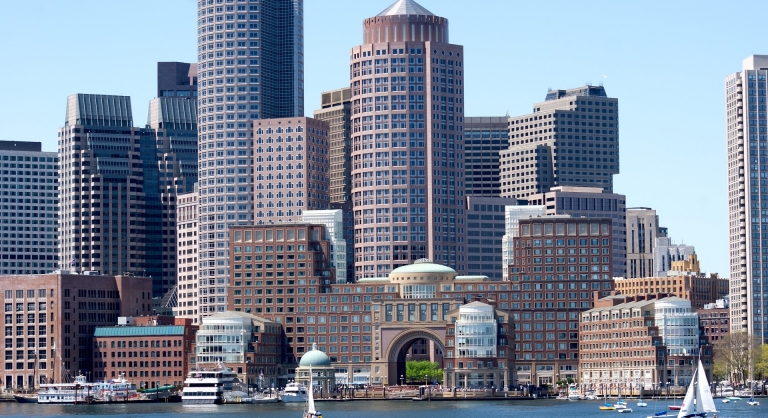You Can Get There From Here: Waterfront Access to Boston Harbor
A great dialogue is underway regarding public access to the Boston Harbor waterfront. Finally, finally, finally. Long ago, Providence regained access to its waterfront with the successful development of Waterplace Park and River Walk. Similarly, Baltimore was a model for urban waterfront redevelopment with its Inner Harbor.
For decades, it has seemed that we have had little discussion in Boston about access to the water–and little access. One could have concluded that we just did not care about our waterfront. A visitor could barely find a restaurant with a harbor view, never mind with outdoor seating for a drink or dinner. Over time, State and City workers toiled to increase access to the water, but this admirable work never attracted much attention. The park at Long Wharf is a beautiful access point to the harbor, but one you hear very little about.
The Big Dig and the cleanup of Boston Harbor have certainly increased the waterfront as an amenity. The development of the Seaport District has created the opportunity for new public spaces along our harbor. The public amenities at Fan Pier, planned over decades and now being dramatically constructed, add a new dimension to our city. At the same time, the general impression is that outside the decision making process, there has been precious little discussion of the waterfront in the media or among the general populace.
So this dialogue on what we want our waterfront to be is welcome. Late, very, very, very late, but welcome. A lot of the bigger decisions have already been made. For example, we could have had an Esplanade-like wide, multi-use public space. The decision was made for a more urban environment with walkways and a small park system. While some might like to debate that decision, it is better to look forward. And what is shaping up is already far, far better than we have ever had in Boston.
Massachusetts Chapter 91 is the Massachusetts Public Waterfront Act. The Commonwealth uses this tool to ensure that uses of the waterfront serve a public purpose. It is the modern embodiment of the Public Trust Doctrine to provide that these critical waterfront lands are subject always to public use. Chapter 91 has often been the primary lever available to the Commonwealth to require public benefits from waterfront development projects. It has also, unfortunately, on occasion been a source of project delay and odd anomalies like public parks on the rooftops of waterfront buildings.
It is in the interest of the Commonwealth and private developers that the public be motivated to access the waterfront in as many ways as possible. Our citizens are renewed by their connection to the water. Boston is presented as the world-class, amenity laden city that it prides itself as being. Condos are sold and major Fortune 500 companies decide to locate here. Restaurants are full and water tour companies succeed. Thankfully, the dialogue is not about whether we need public access, but about the type of access to the water.
Let the dialogue continue, let great public amenities be built, and let great new development projects rise from the ground. As we are in the midst of an historic development climate, the decision making should incorporate this dialogue, but also be crisp and build on the vision that is in place for the transformative reclaiming of the waterfront.
Categorized: Uncategorized




